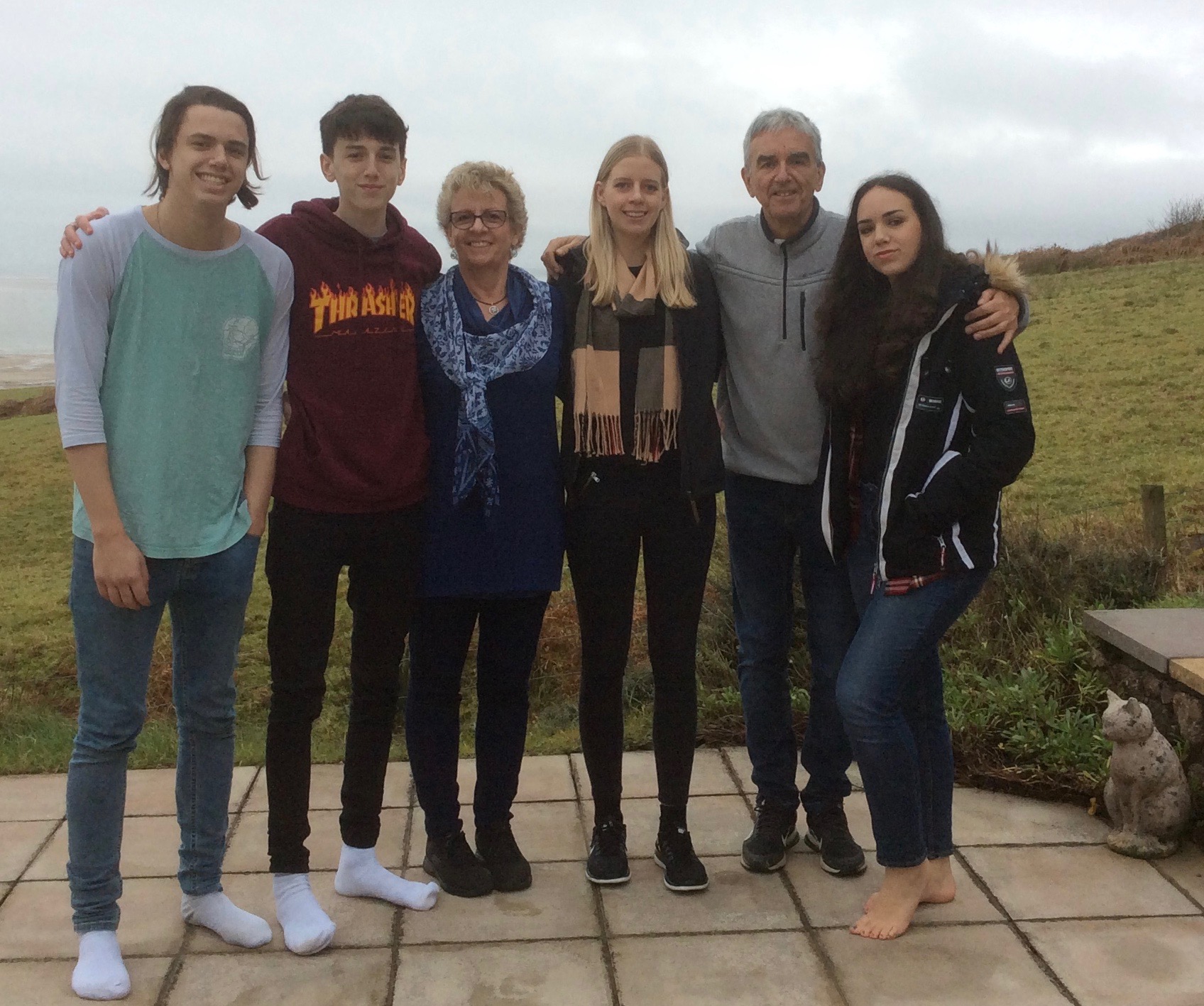In the third year of my psychology degree at university in the mid-1970s, I did not know whether I wanted to go on to study clinical psychology or conduct research in psychopharmacology. I decided to do the latter and ended up spending 25 years as a neuroscientist, studying the relationship between the brain chemical dopamine and ‘disorders’ such as schizophrenia, Parkinson’s disease and addiction. And then I changed…
I had a great time as a neuroscientist and loved my work. I was lucky enough to spend three years (1981-84) as a postdoctoral fellow with Arvid Carlsson, the ‘father’ of dopamine and recipient of The Nobel Prize in Physiology or Medicine in 2000. I had such an amazing time in Gothenburg (Sweden) and our research was truly very exciting. I also spent three months at Yale University School of Medicine working on a collaborative project.
I then worked for two years in a new research centre at Sinai Hospital in Detroit, USA. I returned to the UK at the end of 1986 to take up a prestigious five-year Advanced Research Fellowship awarded by the Science and Engineering Research Council and set up my own research laboratory in the Department of Psychology at the University of Reading. Our research was focused on the regulation and function of different dopamine-containing systems in the brain.
In 1992, I was awarded a Wellcome Trust University Award and moved my laboratory to the Department of Psychology at the University of Swansea. I was lucky enough to live on the beautiful Gower Peninsula and have an office at the University on the ninth floor overlooking Swansea Bay. An unrivalled view in British academia!
Over time, my research had become increasingly focused on addiction. The laboratory was doing well—attracting good research funding and generating numbers of scientific publications—and I was excited by what we were doing. We had also developed a new theory on brain mechanisms underlying addiction, which received a good deal of publicity. However, despite our success, I was beginning to feel that something wasn’t quite right.
By the end of the millennium, I realised that I had become a frustrated neuroscientist! Whilst I could tell a good story about brain mechanisms underlying drug addiction, I did not feel that I (nor any other neuroscientist) was actually helping anyone overcome their addiction. The idea that addiction could be ‘cured’ by a drug, which was suggested by many neuroscientists, made me laugh (and still does).
 As a psychologist, I was intrigued by addiction and I felt the only way that I could understand it and begin to help people (which I wanted to do) was by talking to people who were affected by substance use problems. I met some treatment agency workers in Swansea who introduced me to some of the people they were trying to help. I was inspired by a small group of recovering people, not just by their bravery in overcoming their personal problems, but also by their strong desire to help other people.
As a psychologist, I was intrigued by addiction and I felt the only way that I could understand it and begin to help people (which I wanted to do) was by talking to people who were affected by substance use problems. I met some treatment agency workers in Swansea who introduced me to some of the people they were trying to help. I was inspired by a small group of recovering people, not just by their bravery in overcoming their personal problems, but also by their strong desire to help other people.
And so I began a journey that has taken me to where I am today. I made the decision to close my laboratory and focus on working in the addiction field with humans (rather than laboratory rats). I set up an initiative called WIRED (later to become Wired In) and a charity Wired International Ltd. I continued by job as a Professor of Psychology, but when I wasn’t teaching I was engaged in a range of activities in the addiction field.
I was fortunate enough to win the tender to evaluate all projects supported by the Drug and Alcohol Treatment Fund in Wales. Over the next two years, I spent a good deal of time visiting treatment agencies and other organisations around Wales (and later England and Scotland), talking to practitioners, clients and family members. Several things became apparent to me.
Firstly, as a society we were not very good at helping people overcome substance use problems. Whilst I met many excellent practitioners, they were the first to admit that the system they operated within needed massive improvement. Moreover, most of the people I met who were working in the field did not really understand what addiction and recovery were really about.
Secondly, information flow in the field was poor. Clients, practitioners and family members told me that they are not getting enough of the right information. Leading addiction experts told me that whilst we know a lot about how to help people overcome addiction, little of this information was actually used in practice.
Thirdly, I became convinced the changes required to modify how we helped people overcome substance use problems were not going to come from a ‘top-down’ approach. Government was far too divorced from the reality of what was needed on the ground and did not understand the key issues. Ministers and civil servants did not appear to care about the problem. They just said what they had to say to appear to have done what was expected by the system. The people who needed help were their lowest priority.
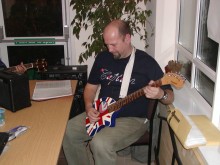 Fourthly, I discovered the tremendous passion that exists in this field, shown by people who have overcome a substance use problem, their family members, and by some practitioners.
Fourthly, I discovered the tremendous passion that exists in this field, shown by people who have overcome a substance use problem, their family members, and by some practitioners.
 Two local treatment agency workers in particular inspired me at that time and over the following years—Keith Morgan and Dave Watkins. Their DOMINO project, which was about providing hope, creating a feeling of belonging, building recovery capital, and enhancing motivation and self-esteem, was a joy to behold.
Two local treatment agency workers in particular inspired me at that time and over the following years—Keith Morgan and Dave Watkins. Their DOMINO project, which was about providing hope, creating a feeling of belonging, building recovery capital, and enhancing motivation and self-esteem, was a joy to behold.
I knew at this time that the future of Wired In had to be about empowering people to tackle substance use problems, be it their own problems, those of a loved one, or (for practitioners) those of a person visiting a treatment agency for help. Wired In had to harness this passion and energy at a grassroots level.
 At this stage, two books inspired me further. After reading Beating the Dragon: The Recovery from Dependent Drug Use by James McIntosh and Neil McKeganey, I made the decision to start a research programme involving qualitative analysis of interviews.
At this stage, two books inspired me further. After reading Beating the Dragon: The Recovery from Dependent Drug Use by James McIntosh and Neil McKeganey, I made the decision to start a research programme involving qualitative analysis of interviews.
The first piece of research, which focused on the effects of substance use problems on the family, was conducted by Gemma Salter, a third year undergraduate. Gemma was awarded the prize for the project of the year in my Psychology department.
Here I was, trying to make sense of addiction and recovery by analysing what people had to say, whilst a few years earlier I had been trying to do the same by recording the neuronal activity of single cells in an anaesthetised rat. What a wonderful change!
Over the following years, I have learnt a lot from listening to the voices of people who have been affected by substance use problems, either directly or indirectly through the problems of a loved one. I still believe strongly that these voices are not currently used enough to help improve the way that society helps people overcome addiction.
Our research programme continued over the years and involved a number of students and ex-students, including Lucie James, Gemma Salter, Sarah Davies, Aimee Hopkins, Laura Davies, Louise Watts and Emma Murphy. We conducted a range of projects on recovery, addiction, treatment, prejudice, overdose, harm reduction, and family issues.
In 2002, Becky Hancock and I started writing a series of Personal Stories, which convey the voices of people affected by substance use problems. The person whose story we first wrote (known as Natalie) remains a close friend and she is over 20 years into her recovery. These Personal Stories form the foundation of my current programme of Recovery Stories.
The second book that inspired me was Community Building on the Web by Amy Jo Kim. Through reading this book, I became convinced of the power of web communities for helping tackle social issues. My vision was to build a virtual meeting place for peers to communicate with one another, a place where ideas could be developed and exchanged. Sadly, I spent over five years trying to raise the funding to do this—without success.
Ash Whitney and I launched Daily Dose in January 2001 and this became the leading information portal on substance use. Daily Dose attracted over 8,000 subscribers, was linked to by many major organisations in the world, and was top of many millions of listings on Google.
Mind you, things were not always rosy with Daily Dose. Every year, I struggled to raise the funding required to maintain the service. Also, there was an 18-month period when I was running the service myself (unpaid), getting up at 05.15 in the morning to work for 90 minutes before getting the children ready for school and going off to work in the University. I returned to Daily Dose after dinner every night.
Things eventually improved and Daily Dose had two years of good funding but, sadly, we were not able to attract funding after that, so I closed Daily Dose on 26th March, 2010.
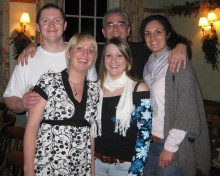 From 2001-07, our Wired In work South Wales (and beyond) was organised by Lucie James, Sarah Davies, Becky Hancock and Kevin Manley. For these colleagues, working as a core member of Wired In involved being involved in a diverse range of activities, including a variety of forms of writing, film-work, and interacting with a wide range of people. And putting up with me!
From 2001-07, our Wired In work South Wales (and beyond) was organised by Lucie James, Sarah Davies, Becky Hancock and Kevin Manley. For these colleagues, working as a core member of Wired In involved being involved in a diverse range of activities, including a variety of forms of writing, film-work, and interacting with a wide range of people. And putting up with me!
It’s hard to pull out highlights, but there were two pieces of work of which I was particularly proud. Sarah and I conducted an evaluation of the BAC O’Conner for Noreen Oliver and our visits were a real eye-opener! Here was a genuine recovery community, a place where recovery oozed out of the walls. I couldn’t tell who was there to help and who needed help! It was a special experience and I learnt so much from those visits.
 Over the years, I watched as Noreen has continued to build and facilitate BAC O’Conner and related activities (Langan’s Tea Rooms and RIOT Radio). We met periodically and it was always great to catch up. Here’s a lady who was at death’s door because of her alcohol dependency, but who overcame her problem, decided to help others, and has since been a dynamo in the recovery field.
Over the years, I watched as Noreen has continued to build and facilitate BAC O’Conner and related activities (Langan’s Tea Rooms and RIOT Radio). We met periodically and it was always great to catch up. Here’s a lady who was at death’s door because of her alcohol dependency, but who overcame her problem, decided to help others, and has since been a dynamo in the recovery field.
I’ve also had the honour of visiting other exciting recovery communities, such as LEAP in Edinburgh, The Basement Recovery Project in Halifax, and the Living Room in Cardiff.
The second piece of work of which I was particularly proud was Lucie James’s qualitative research on the views and experiences of people in two prison treatment programmes. This research showed four key elements that facilitated recovery: a sense of belonging, a socialisation process that facilitated belonging, learning, and the support of other people. These four themes impacted on self-esteem and motivation to change. I could certainly see all these processes operating in BAC and the other recovery communities I visited!
 I was thrilled when we started our film-work, as I have been interested in film-making ever since I was a teenager, ‘as a couch potato’, I’m afraid. Jonathan Kerr-Smith, a young filmmaker from near Cardiff, volunteered to make our first filmed Personal Story (Mark Saunders) and he later became involved in various projects.
I was thrilled when we started our film-work, as I have been interested in film-making ever since I was a teenager, ‘as a couch potato’, I’m afraid. Jonathan Kerr-Smith, a young filmmaker from near Cardiff, volunteered to make our first filmed Personal Story (Mark Saunders) and he later became involved in various projects.
I was also very impressed with Lucie who has collaborated with Jon on all aspects of the filmmaking process, including editing the finished products. As an aside, I should mention one of Jon’s other projects—his feature length film on William Rodriquez, the last man to leave the World Trade Centre on 9/11, was shown at the New York Film Festival in 2008.
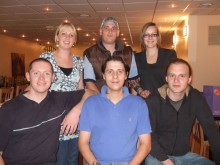 I was so proud of the Wired In ethos that this team helped create—the warmth and empathy shown, the asking rather than telling, the giving of hope, our volunteers becoming role models, the passion, and the creation of a ‘voice’ of the people. I loved watching our films and reading the Personal Stories, but most of all I loved seeing people overcome their problems. It gave me a wonderful feeling.
I was so proud of the Wired In ethos that this team helped create—the warmth and empathy shown, the asking rather than telling, the giving of hope, our volunteers becoming role models, the passion, and the creation of a ‘voice’ of the people. I loved watching our films and reading the Personal Stories, but most of all I loved seeing people overcome their problems. It gave me a wonderful feeling.
At the same time of experiencing these joys, I have to confess that it was a struggle to keep going at times. There was a long period where I was doing two jobs, and we always survived on minimal money, despite many people thinking we were some big organisation. We just couldn’t get significant funding for Wired In, so we were always scraping by. We tried government, DATs [Drug Action Teams], commissioning bodies, treatment services and charities for funding, but our efforts were rarely rewarded.
In 2006, I decided to concentrate on Wired In and so took early retirement from my University in September of that year. I also started to challenge the government treatment system, which had a poor track record for helping people overcome substance use problems, and became a strong advocate of personal recovery. [A friend later told me that I had been named as a ‘public enemy’ by the NTA (National Treatment Agency)—the organisation overseeing the UK treatment system—because I was challenging the treatment system and empowering people. I felt proud about that—I was obviously having an impact!]
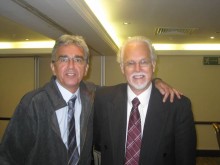 My interest in recovery was fuelled by being introduced (by Tim Leighton of Action on Addiction) to the writings of William L. White, a leading recovery advocate in the US, and the recovery advocacy movement in that country. Bill’s writings fired me up in a way I cannot really describe.
My interest in recovery was fuelled by being introduced (by Tim Leighton of Action on Addiction) to the writings of William L. White, a leading recovery advocate in the US, and the recovery advocacy movement in that country. Bill’s writings fired me up in a way I cannot really describe.
I later invited Bill over to the UK and he gave a fantastic talk at an event in London organised by Action on Addiction and Wired In. For a number a years, I had sometimes felt that Wired In did not have a clear enough focus—not any more! It was now clear to me that the primary focus of Wired In was to help people find recovery from addiction, and help society create a recovery-oriented system of care.
I also knew that it was now time to build that web community, one which would empower and connect recovering people. I committed some of my personal retirement money to developing a new online recovery community, Wired In To Recovery (WITR), with the help of Nathan Pitman of Nine Four and Wired In team members Lucie James and Kevin Manley. We started developing the website early in 2008 and launched officially in late November of that year.
 My personal life had undergone some upheaval in the past few years and my youngest children (Ben, Sam and Natasha) were now living in Dubai with their mother and her new husband. After talking with the children, we decided that I would move to Perth in Western Australia to be with my new partner Linda and her daughter Sophie. I began my new life on Christmas Day, 2008.
My personal life had undergone some upheaval in the past few years and my youngest children (Ben, Sam and Natasha) were now living in Dubai with their mother and her new husband. After talking with the children, we decided that I would move to Perth in Western Australia to be with my new partner Linda and her daughter Sophie. I began my new life on Christmas Day, 2008.
In 2009, I continued to run the web community (pretty much alone) from over here, which I can tell you was an exhausting business. Not only was I having to monitor the site throughout day and evening, but the UK became busy at the time (evenings) I wanted to ‘turn-off’ in Australia. No chance.
Community websites can be very difficult to oversee, particularly if there is conflict and confrontation. There was certainly plenty of that in the early days of WITR—particularly from people wanting to attack AA—something which I couldn’t allow. Our website was being used by vulnerable people and I certainly couldn’t allow personal attacks and confrontation to occur. A few ‘red cards’ were used!
Eventually though, things simmered down and WITR became an empathic environment where people supported each other. I was really touched by some of the thoughtful and caring comments that were added to the blogs on the website.
Over the next four years, we received many positive comments from people around the world! Wired In To Recovery grew to have 4,000 members and comprised over 7,500 blogs (from 1,000 bloggers). It not only contained blogs, but also stories, articles, videos and discussion forum.
The community provided hope and understanding, connected people, and became a source of recovery advocacy. I was told on numbers of occasions how trusted WITR and the Wired In brand were around the UK.
Despite this success, we were not able to attract much sponsorship for the website. In fact, over a four-year period we attracted far less money than I had invested of my personal money in the development of the community. This was very frustrating, particularly knowing that the treatment field received nearly £1 billion per annum. The web community represented an incredible resource for the treatment field, in that services could encourage their clients to access our website and receive ongoing support and information.
However, there was minimal commitment from the treatment field, which I struggled to understand for a number of years. However, some of my more cynical friends have pointed out that many treatment services are more focused on themselves rather than their ‘clients’ and besides—why would they want a client empowered? They might lose a customer! There may be more than a little truth in that for some services.
Eventually, I decided that WITR was not going to get funded and so decided to close it down in December 2012. I had no option. I had invested all my savings into the initiative and could give no more. I needed to get on with something different, as well as generate an income to live.
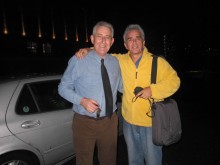 Over the next years, I visited the UK and often caught up with old friends in the recovery field—David McCartney, Neil McKeganey, Noreen Oliver, Stuart Honor, Wynford Ellis Owen and many others. During these visits, I was able to feel the pulse of recovery in parts of the UK.
Over the next years, I visited the UK and often caught up with old friends in the recovery field—David McCartney, Neil McKeganey, Noreen Oliver, Stuart Honor, Wynford Ellis Owen and many others. During these visits, I was able to feel the pulse of recovery in parts of the UK.
 I spent a good amount of time in Edinburgh—my daughter Annalie was at medical school there and I love Scotland—and have always visited David McCartney and colleagues at LEAP. These visits and participating in groups with the LEAP patients have been one of my great joys! It was exciting to see Edinburgh becoming a ‘recovery city’.
I spent a good amount of time in Edinburgh—my daughter Annalie was at medical school there and I love Scotland—and have always visited David McCartney and colleagues at LEAP. These visits and participating in groups with the LEAP patients have been one of my great joys! It was exciting to see Edinburgh becoming a ‘recovery city’.
On moving to Perth, I tried to raise interest and funding to develop recovery-based projects here, sadly without success. The reality was that Perth (and many other parts of Australia) were behind the US and UK in developing genuine recovery-based care systems in the addiction field. Many local people admitted this to me.
It was a frustrating experience, banging one’s head against a brick wall, particularly when evidence indicates that many more people will be helped by society adopting the recovery approach. I sometimes wonder why the system and the people working within it do NOT want change? It is ironic, given that they expect people working with substance use problems to change. On the other hand, we know that vested interests are strong and they can override the need for change.
 My good friend Michael Scott, who has been in recovery over 40 years, and I frequently talked about setting up a recovery community centre here in Perth and using this centre as a foundation for developing a wider grassroots recovery initiative.
My good friend Michael Scott, who has been in recovery over 40 years, and I frequently talked about setting up a recovery community centre here in Perth and using this centre as a foundation for developing a wider grassroots recovery initiative.
I tried to raise interest and funding to develop recovery-based projects, sadly without success. In one private meeting, a senior public figure said, ‘You’re not wanting to change anything, are you?’ My talk on recovery-based models of care at a conference in Perth received a very positive response from many members of the audience. Most of the other speakers talked about addiction as a medical condition!
On my suggestion, another good friend in recovery, Adam Brookes, decided to visit recovery centres in the UK that I recommended. He came back very excited and enthused, having had such a wonderful experience and having learnt so much. The treatment agency where he worked showed no interest at all in what he had to say. As an aside, you can read Michael and Adam’s Stories on this website and an updated version in my forthcoming new book.
 In 2013, in collaboration with website designer Ash Whitney, I launched Recovery Stories, as I had always believed that storytelling has an important role to play in the recovery field. At the end of the day, addiction recovery is about people’s journeys into and out of addiction. It’s about personal transformation. Central to this website, were fifteen Recovery Stories of people from the UK and Australia.
In 2013, in collaboration with website designer Ash Whitney, I launched Recovery Stories, as I had always believed that storytelling has an important role to play in the recovery field. At the end of the day, addiction recovery is about people’s journeys into and out of addiction. It’s about personal transformation. Central to this website, were fifteen Recovery Stories of people from the UK and Australia.
In my early days in Australia, I observed a good deal of racism towards Aboriginal people. I found it difficult to come to terms with this racism. I decided to read about Aboriginal peoples—there are many different nations of Aboriginal people in Australia—and learn more about their culture and history. I soon learnt how the colonisation of Australia by the British led to starvation, violence, disease, abduction and the exploitation of Aboriginal people, along with the taking of their land and efforts to suppress their culture. Government policies were put in place which eventually controlled every aspect of the lives of Aboriginal people, including removal of their children.
One book I read, Trauma Trails, Recreating Songlines: The transgenerational effects of trauma in Indigenous Australia by Judy Atkinson, had a strong impact on me. Judy described how the various negative elements of the colonisation process created trauma amongst Aboriginal people that has been unwittingly passed down the generations. This historical trauma—sometimes called transgenerational or intergenerational trauma—still has a profound impact today.
 Judy also described how some Aboriginal people had come to use alcohol and drugs to dampen the pain experienced in their lives, and how this often led to addiction to such substances and problems arising from this addiction. Mental health problems, suicide and violence are other consequences of this trauma. I learnt how historical trauma and the responses that occur to this trauma have been experienced by Indigenous people in other countries, such as the First Nations People of Canada, the Maori of New Zealand and Native Americans in the USA.
Judy also described how some Aboriginal people had come to use alcohol and drugs to dampen the pain experienced in their lives, and how this often led to addiction to such substances and problems arising from this addiction. Mental health problems, suicide and violence are other consequences of this trauma. I learnt how historical trauma and the responses that occur to this trauma have been experienced by Indigenous people in other countries, such as the First Nations People of Canada, the Maori of New Zealand and Native Americans in the USA.
Judy’s book not only helped me gain important insights into trauma, but also into the healing of trauma. Judy’s research and workshops involved listening to Aboriginal people about their trauma and healing. From these ‘stories of pain, stories of healing’, she was able to develop key insights into the healing process which she outlined in her book. I was fascinated by this research and was so stimulated that I decided to develop an educational website, Sharing Culture, that was focused on the healing of transgenerational trauma.
I also started reading work by key researchers/clinicians in the trauma healing field, such as Bruce Perry, Bessel van der Kolk, Judith Herman and Gabor Maté. I also continued reading about Indigenous healing and cultures from around the world, and realised that there was much that Western culture could learn from Indigenous peoples.
Given the healing power of story, I started to look for Aboriginal stories of healing when I developed Sharing Culture. I soon found an enthralling and inspirational story, one that was almost from my own back yard. A story of trauma and healing amongst Aboriginal children of the South West part of Western Australia. The story of the Aboriginal child artists of Carrolup.
In the initial research stages of the Carrolup project, I worked with filmmaker and close friend Michael Liu who had also helped with the Sharing Culture project. I then linked up with Social Anthropologist John Stanton, who spent 38 years as Director of the Berndt Museum of Anthropology at The University of Western Australia. John, who has become a close friend, had been working on the Carrolup story for over 40 years.
John and I were of the shared opinion that telling the story of the Aboriginal child artists of Carrolup would facilitate healing of trauma and its consequences amongst Aboriginal people, in part through creating cultural pride and, in turn, connection to culture. Research has shown that connection to culture is a major factor in facilitating healing amongst Indigenous peoples.
Carrolup would facilitate healing of trauma and its consequences amongst Aboriginal people, in part through creating cultural pride and, in turn, connection to culture. Research has shown that connection to culture is a major factor in facilitating healing amongst Indigenous peoples.
In November 2018, we launched The Carrolup Story, a Storytelling, Education and Healing online resource, developed in collaboration with Ash Whitney. We also launched an accompanying YouTube channel.
In June 2020, I published the book Connection: Aboriginal Child Artists Captivate Europe, which is available on Apple, Amazon and Kobo, in association with John Stanton. I continue to blog on The Carrolup Story website and give public talks.
Early in 2021, I had an itch. I started to scratch the itch. It got worse. That itch was a desire to start writing about addiction and mental recovery again. I contacted the people who had provided Recovery Stories for this website and asked if I could include their original stories in an eBook. They agreed. Most agreed to include an update, seven years on, which either they wrote or I wrote after interview sessions. I published Our Recovery Stories: Journeys from Drug and Alcohol Addiction, in eBook form In April 2021.
I also decided to update this website and start blogging again. It’s lovely to be back. If all goes well, I’ll be launching a new version of the Recovery Stories later this year. I’m working away behind the scenes. 